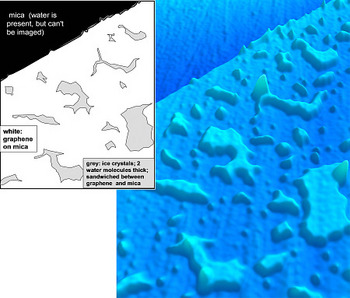Hydrogen, not carbon, dictates the shape and size of the graphene crystal, say researchers at the University of New Mexico

A new approach to obtaining graphene greatly reduces the amount of problems that have troubled researchers in this field in recent years, and provides a path to use the crystalline form of graphite in the development of advanced electronic devices in the future.
The findings of researchers from the US Department of Energy's National Laboratory demonstrate that hydrogen, and not carbon, dictates the shape and size of the graphene crystal, according to a team of researchers led by Sergei Smirnov, professor of chemistry at the University of New Mexico. The research findings were published in the scientific journal ACS Nano.
"Hyden not only initiates the beginning of the growth of the graphene, but it also controls the shape and size of the graphene," says one of the researchers. "In our article, we describe a method for growing well-defined graphene crystals with perfect hexagonal shapes that progress to create a perfect single-crystal structure."
In the last two years, the growth of graphene has been based on the decomposition of carbon-containing gases such as methane on copper foil at high temperatures, in a process known as chemical vapor deposition (CVD). Little was known about the exact mechanism, but researchers realized that they would have to dig deeper and better understand the growth mechanism before they could produce high-quality graphene layers. Until now, graphene layers contained graphene crystals with irregular structures and different sizes, properties that prevented them from being single crystals.
"We showed that, surprisingly, it is not only the carbon source and the substrate itself that dictate the growth rate, shape and size of the graphene," explains the researcher. "We found that hydrogen, which was previously considered to have a relatively tolerant role, is also essential for the growth of graphene. It contributes both to the activation of the adsorbed molecules that initiate the growth of the graphene and to the removal of the weak bonds found at the ends of the nucleus and which control the quality of the resulting graphene."
Using their new process, the researchers developed a method to reliably synthesize graphene on a large scale. The fact that their method allows for control over the size of the crystal and its boundaries, leads to improved activity of the material in transistors, semiconductors and many other electronic devices.
The implications of this research are significant, according to the researchers who stated that: "Our findings are essential for developing a method for growing single-crystal graphene on a large scale which will be an important breakthrough in practical applications of graphene for the development of commercial devices."
